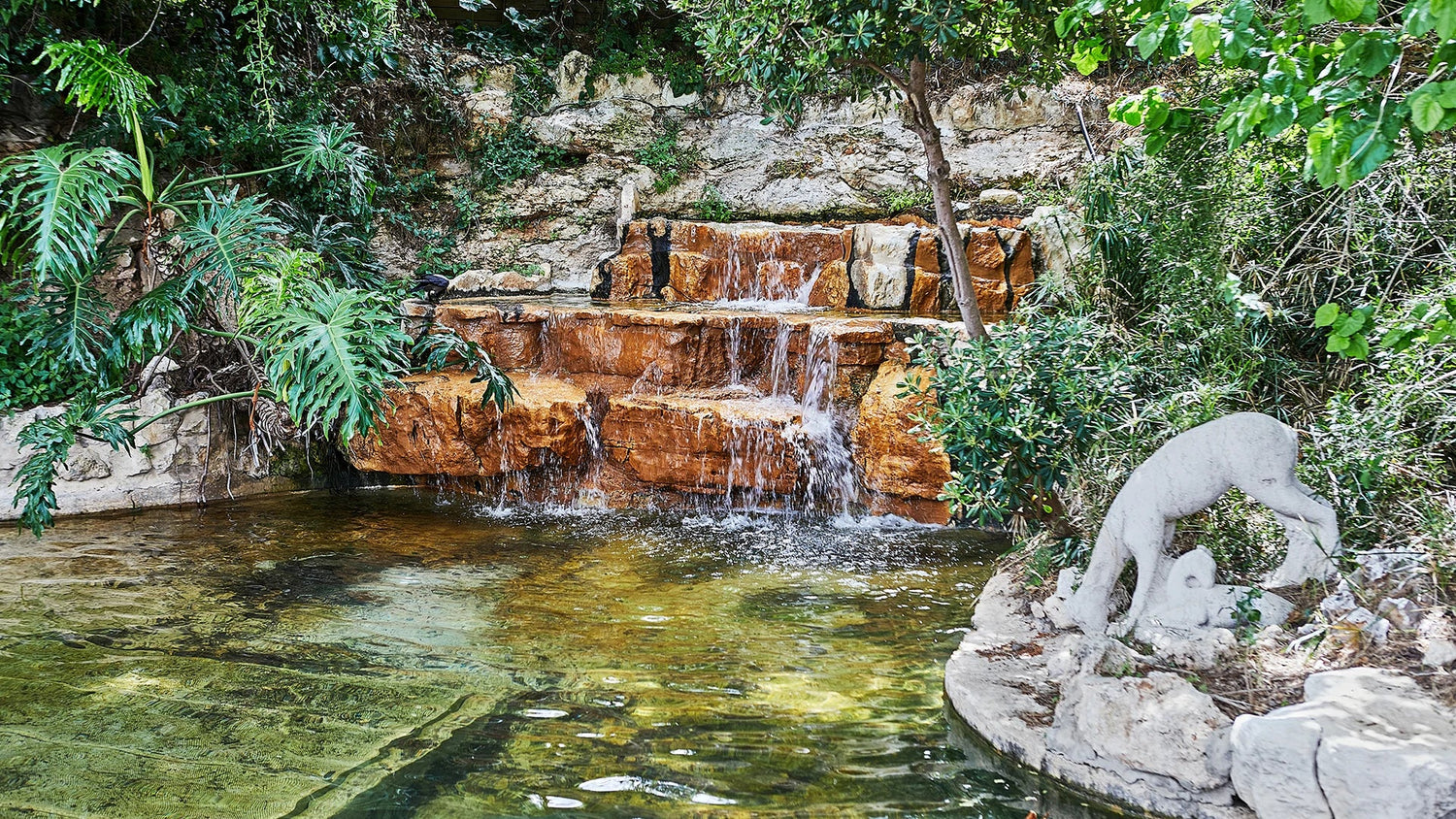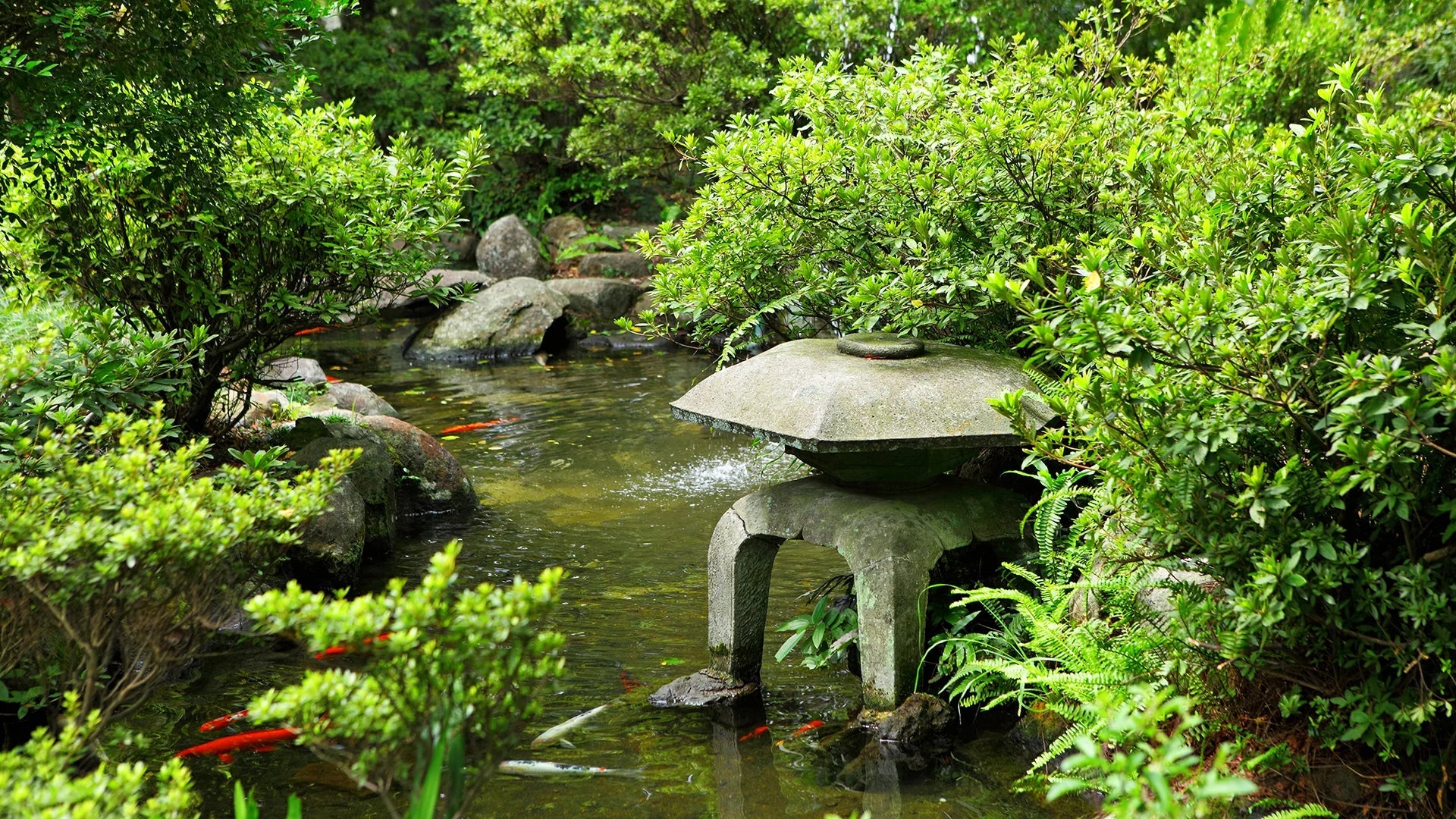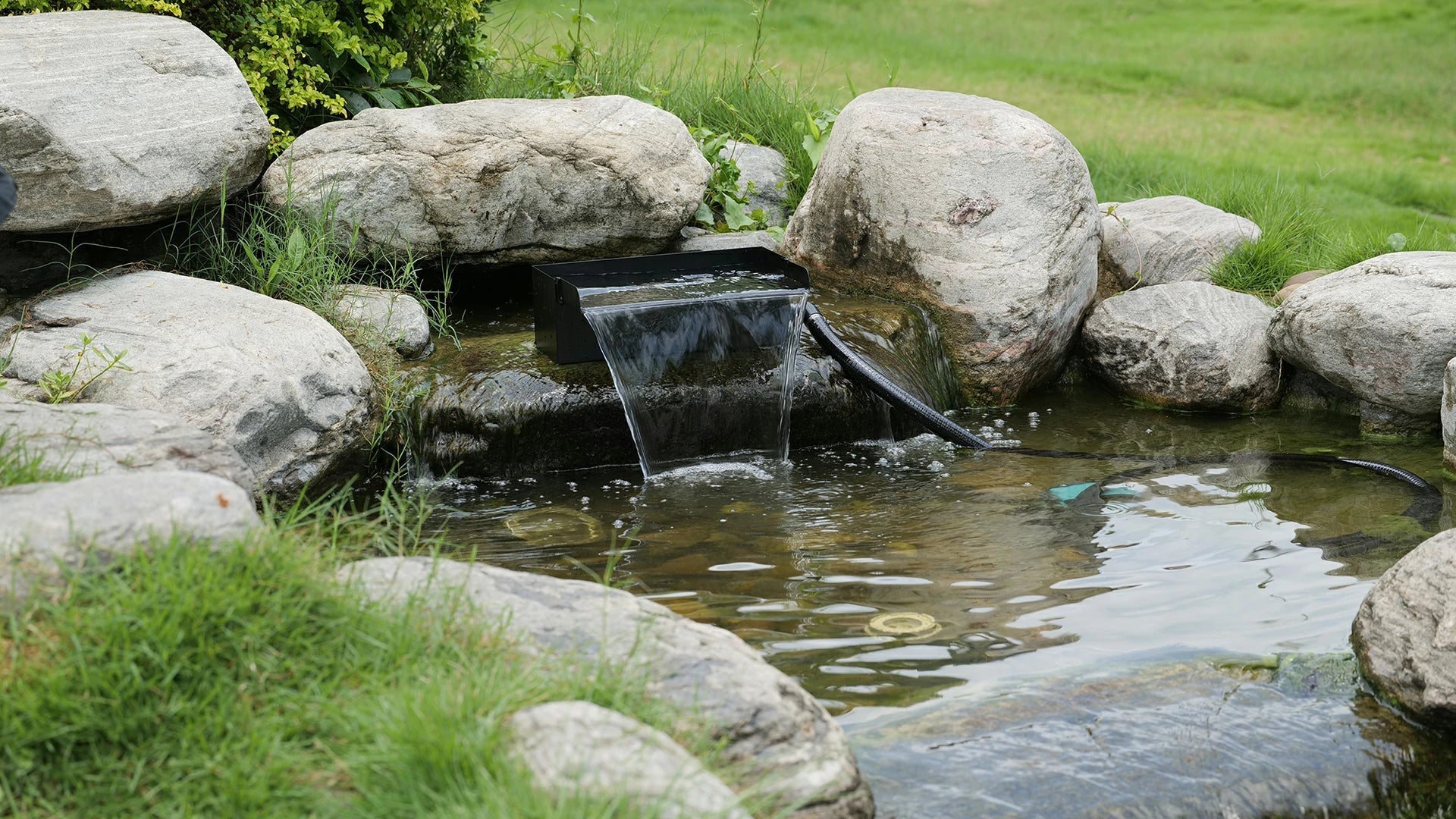Every pond owner dreams of that glassy mirror-like surface—that kind of clear water pond that glistens with sunlight and looks so perfect in photos. But underneath that shiny surface, all is not as perfect as it appears. While clarity does seem to be a dream come true goal, it doesn't necessarily equate with a balanced or healthy environment. In fact, some of the most healthy wild ponds aren't perfectly clear—they have microscopic organisms, good bacteria, and organic matter that all exist together to maintain the ecosystem.
Understanding the difference between “clean” and “healthy” is the foundation of responsible pond care. In this guide, we’ll uncover why clear water can sometimes be misleading, how to test and manage true healthy pond water, and how Poposoap’s advanced filtration and solar-powered systems help maintain both beauty and biological balance.
The Myth That Transparency Is Not Equal to Health
It's simple to conclude that a clear pond is a clean pond. Well, cloudy or green water isn't pretty. But clarity isn't the complete picture. A pond can be perfectly clear and still biologically "ill."

Clear Doesn't Mean Balanced
A stunningly clear pond can really lack essential nutrients or beneficial bacteria. Without plankton or natural bacteria, the water may be lovely to behold but sterile—unable to accommodate fish, amphibians, or plants.
Chemical Clarity
Some pond owners use chemical clarifiers or UV sterilizers in an attempt to achieve instant gratification. These will eliminate suspended particles but kill beneficial bacteria and microalgae that maintain water chemistry balance. In the long term, this produces pH fluctuations and oxygen deficiencies.
The "Invisible" Problems
Pure water may still contain noxious pathogens like parasites, protozoa, or bacteria that are not visible to the naked eye. Regular testing and good filtration are needed to prevent these hidden contaminants from damaging fish and plants.
Nature's Cloudy Balance
In the wild, healthy ponds tend to be slightly turbid from dissolved organic matter or plankton blooms. This mild cloudiness shields aquatic organisms from intense sunlight, moderates temperature, and maintains nutrients in equilibrium.
The truth is, pond water clarity in itself is never a measure of success. A healthy pond thrives by virtue of stability, diversity, and self-reinforcing processes—never appearances on the surface.
Pathogens and Plankton Considerations
Quality of water is more than appearance—it's a living balance of microorganisms, nutrients, and oxygen. Two of the most underrated considerations for maintaining healthy pond water are pathogens and communities of plankton.
Pathogens and Bacteria
Disease-causing bacteria such as Aeromonas or Pseudomonas prefer to reside in still, low-oxygen ponds. They infect fish, induce fin rot, or ulcers. Ironically enough, they will do well in "clear" ponds where there is minimal competition from good bacteria.
Beneficial Bacteria vs. Harmful Bacteria
Healthy ponds contain aerobic bacteria—bacteria thriving in oxygen-rich environments—dominant. They break down organic waste into less toxic substances. When oxygen is reduced, anaerobic bacteria are dominant and produce toxins like hydrogen sulfide and ammonia.
Role of Plankton
Plankton—free-floating, tiny plants and animals—are at the base of a pond food chain. Phytoplankton (microscopic algae) produce oxygen through photosynthesis, whereas zooplankton eat organic trash and bacteria.
The slightest greenish color due to phytoplankton is never an issue—it's an indication of a living, oxygen-generating pond. Eradicating plankton entirely in order to produce crystal clarity interferes with this natural process and tends to result in fish stress and ecosystem instability.
Oxygenation and Circulation
Maintaining uniform water flow and aeration keeps pathogenic growth under control. Poposoap floating fountains and solar aerators enhance oxygenation without adding to noxious stagnation even in summer.

In all, a bit of "cloudiness" is certainly a blessing. It's the biological heartbeat of your pond—proof that nature is functioning.
Test Index Recommendation
Visual inspection is not sufficient to tell if your pond water is healthy. Objective data are delivered by routine testing. For a well-balanced clear water pond, maintain the following critical parameters in check:
pH Level (Desired Range: 6.8–8.2)
A stable pH encourages healthy fish and microbial growth. Sudden jumps are most likely due to over-algaecide or poor buffering.
Ammonia (Desired: 0 ppm)
Ammonia is derived from fish waste and decaying matter. It is toxic even when present in low concentrations. Biological filters like Poposoap's solar pond filter systems function to transform ammonia into nontoxic nitrates through nitrifying bacteria.
Nitrite (Ideal: 0 ppm)
A byproduct of ammonia breakdown, nitrite can be harmful to fish respiration. Good filtration and water circulation keep it in balance.
Nitrate (Ideal: <40 ppm)
Excess nitrates fuel algal blooms. The use of aquatic plants or floating plants naturally collects and recycles nutrients.
Dissolved Oxygen (Optimal: >6 mg/L)
All life in the pond requires oxygen. Make use of aeration equipment such as Poposoap floating fountains to circulate water and prevent oxygen crashes during hot spells.
Water Hardness and Alkalinity
These govern buffering capacity and mineral balance. Hard water is more stable, and soft water requires closer watch.
Periodic testing—summer monthly, winter quarterly—is required to keep your pond in harmony beneath the surface, murky or clear as it can be.

Poposoap Water Quality Management Plan
Pond well-being requires a balance between nature and technology—a philosophy that is at the very core of the Poposoap company. Their water management strategy adopts a holistic approach that uses sun-energy technology to keep ponds clean, oxygenated, and biologically stable without harming the environment.
This is how Poposoap water quality management plan increases sustainable pond care:
Natural Filtration Systems
Poposoap solar pond filters incorporate mechanical and biological filtration. Its multi-layer installation has sponges to catch debris, bio-balls for bacterial growth, and ceramic rings for high-level ammonia conversion. It improves long-term stability and clarity without chemicals.
Renewable Energy Operation
All aeration and filtration units are powered by solar panels, eliminating electricity expense and carbon footprints. All systems are installed for easy usage and mobility, which makes clean water management accessible to all.
Continuous Circulation and Aeration
Floating fountains and waterfall kits prevent stagnation, offering oxygenated conditions that promote beneficial bacteria while preventing harmful pathogens. The constant flow also precludes uneven distribution of nutrients, clearing the water through natural means.
Compatibility and Flexibility
Poposoap's modular aquatic ecosystem ensures all filters, aerators, and lights work in concert. This creates a self-circulating cycle of water that adapts depending on pond size, sunlight exposure, and seasonal requirements.
Preventive Maintenance Routine
- Change filters every 2–4 weeks to avoid clogging.
- Clean solar panels monthly for peak performance.
- Regularly check pH and ammonia levels.
- Seasonally adjust panel angles to achieve maximum solar gain.
Let this integrated system keep your healthy pond water alive, dynamic, and clear enough to enjoy, yet full of what life needs to thrive.

Common Mistakes & Suggestions
The majority of pond keepers focus so intensely on achieving crystal clearness that they unknowingly jeopardize their pond's ecosystem. These are the most prevalent errors—and expert eco pond advice to avoid them:
Error 1: Misusing Chemical Treatments
Fix-it-quick clarifiers might drive away suspended particles but destroy beneficial microbes as well. Instead, utilize biological filters and sunlight-powered circulation for balancing nature.
Error 2: Over-Cleaning
Overcleaning disrupts the colonies of microorganisms that maintain your pond's nitrogen cycle in balance. Clean as necessary, and never wash filter media in chlorinated tap water. Wash instead using pond water.
Error 3: Ignoring Water Depth and Shade
Ponds that are too shallow heat up quickly, encouraging algae and oxygen loss. Add lilies to create shade and install floating fountains to create stable temperatures.
Error 4: Assuming "Clear = Safe"
Don't mix up transparency and quality. Regularly check water chemistry and observe fish behavior. Slow-moving or gasping fish are most typically an indication of oxygen or ammonia issues even in clear water.
Mistake 5: Losing Track of Seasonal Adjustments
As temperature changes, oxygen and nutrient levels do too. Stick to Poposoap's seasonal care regime—reducing feeding in winter, cleaning debris in autumn, and increasing circulation in summer.
Pro Tip:
If your pond is too clear but fish are stressed or plants are turning yellow, it's likely too sterile. Add floating plants, beneficial bacteria supplements, or a Poposoap solar filter to rebalance biology.
Final Thought
In pond keeping, beauty and health do not necessarily go together. Clear water can look great, but importance lies below the surface—in the microorganisms, oxygen current, and nutrient cycles that fuel life.
The goal is not to create a sterile pond—it's to create a living, breathing environment. With the right equipment, balance, and understanding, you can have healthy pond water that permits clarity and diversity to exist together.
Poposoap's solar-powered systems make that harmony accessible: clean, renewable, and naturally balanced. They remind us that elegance and sustainability are not mutually exclusive—and that sometimes the healthiest water is not crystal clear, but totally alive.





Leave a comment
All comments are moderated before being published.
This site is protected by hCaptcha and the hCaptcha Privacy Policy and Terms of Service apply.